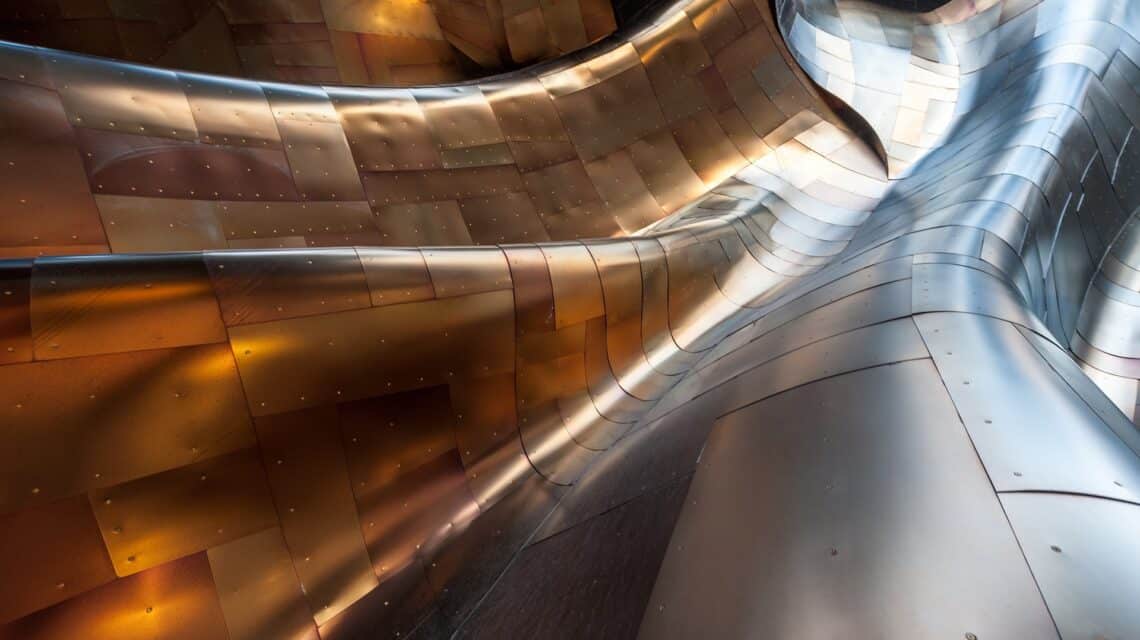Back in elementary school, we all learned that magnets stick to some metals, right? If you recall those science lessons, you know how metal really comes in two varieties —ferrous and non-ferrous. If your magnet sticks, the metal is ferrous, meaning it contains iron. If the magnet doesn’t stick to the metal, then bingo. It’s non-ferrous.
So get your trusty magnet ready, today we’re going to take a look at recycling-non ferrous metals in Texas.
What Are Non-Ferrous Metals?
“Ferrous” comes from the Latin word ferrum, which means “iron.” Scrap metals containing iron are considered ferrous, while scrap metals that contain no iron are considered non-ferrous. Ferrous scrap metal, like steel, is useful for many common industrial purposes. Old cars, home appliances, steel beams, railroad tracks, cargo ships, and other containers are all prime examples of ferrous metal at work. Most scrap metal recycled is predominantly from this category.
On the other hand, because they contain non iron, non-ferrous metals have a higher resistance to rust and corrosion. They’re also much more malleable compared to their ferrous metal counterparts. This makes this metal type ideal for parts like gutters, liquid pipes, roofing, and outdoor signs. Lastly, the non-magnetic property of non-ferrous metals is an important feature for many electronic and wiring applications.
Common Types of Non-Ferrous Metals
Aluminum, copper, lead, zinc, and tin are examples of non-ferrous metals. Even precious metals like bronze, silver, and gold are categorized as non-ferrous. Let’s take a look at several of the more common types of non-ferrous metal scrap you’re likely to come across.
Aluminum
Aluminum’s lightweight and softness makes it ideal for casting and welding to be forged easily into different shapes. However, its low strength means it is not suitable for high-temperature environments. Because of its lightness, aluminum is often chosen for aircraft manufacturing and food and beverage cans. It can also be also used in castings, pistons, railways, cars, and kitchen utensils.
Copper
Copper’s unmistakable red hue usually gives this metal away. Its high ductility and malleability are optimal for usage in thermal and electric machines. Copper can primarily be found in wiring and other conductors needed in the electrical industry. Copper scrap can also come from sheet roofing, cartridge cases, statutes, and bearings. Lastly, as copper is susceptible to corrosion, zinc can be added to create brass. Not only does this alloy make the metal more resistant to corrosion, it gives it a higher tensile strength to withstand higher pressures.
Lead
Lead’s durability and malleability make it ideal for building construction and soldering. It also has a low melting point and low tensile strength, making it resistant to corrosion. As such, lead is commonly used for cable sheathing in electrical power cables, batteries, and even weights for lifting.
Zinc
Zinc’s extremely low melting point and mid-to-low strength allow it to be easily machined. The most common application of zinc is in galvanizing— the process of covering iron or steel with a protective zinc layer to prevent rust. Apart from brass metal, zinc can also be combined with lead and tin to make a solder alloy. Solder has a relatively low melting point and can be used to join electrical components, pipes, and other metallic items.
Tin
Tin’s properties make it great for holding food items. It has good ductility and low tensile strength. Across the scrap metal industry, tin is sometimes referred to as light iron or steel. A tin coating is frequently applied to steel to prevent corrosion. As a lightweight alloy, tin can be found in metal scrap bearings, as well as auto and aerospace parts.
The Benefits of Recycling Non-Ferrous Metals in Texas
Recycling non-ferrous metals in Texas provides sustainable benefits for the environment and your bottom line. Pound for pound, non-ferrous metal has less volume compared to ferrous metal scrap. However, non-ferrous metals are also more valuable per pound compared to ferrous scrap metals.
Finally as part of Austin’s green initiatives, improper disposal of your non-ferrous metal scrap could actually result in costly fines. So, protect the environment, avoid municipal penalties, and make some extra cash to offset your overhead costs by recycling non-ferrous metals.
The Process for Recycling Non-Ferrous Metals
Most non-ferrous metals can be recycled and reused over and over again. When collecting non-ferrous metal scrap, it can be helpful to separate it from ferrous scrap metal. Non-ferrous metal recycling, however, can be challenging because they don’t always come in its purest form. They frequently exist in a variety of liquid and solid mixes from which they must be separated and purified in order to be used.
Non-ferrous metals today can be recycled using one of three methods: electrowinning, precipitation, and non-ferrous sensors. Gardner Metal Recycling will handle the hard part of the recycling through our specialized equipment and Scrap Metal Recycling Experts. All you have to decide is if you want to schedule a pick-up, container service, or drop-off to receive competitive compensation for your non-ferrous metal scrap.
What Non-Ferrous Metals Does Gardner Metal Recycling Accept?
Gardner Metal Recycling buys all types of ferrous and non-ferrous metals. For non-ferrous metals, we accept:
We will even help you sort through electronics containing non-ferrous metal parts like copper wiring. Feel free to bring in your ferrous scrap metals too, like steel, iron, or tin.
Get Paid for Your Scrap Metals
Gardner Metal Recycling offers scrap yard services that can be tailored to your individual needs. We offer comprehensive packages or a la carte options with full transparency and immediate, fair pricing.
Contact our team today to find out how you can get paid to recycle your non-ferrous metal scrap.

